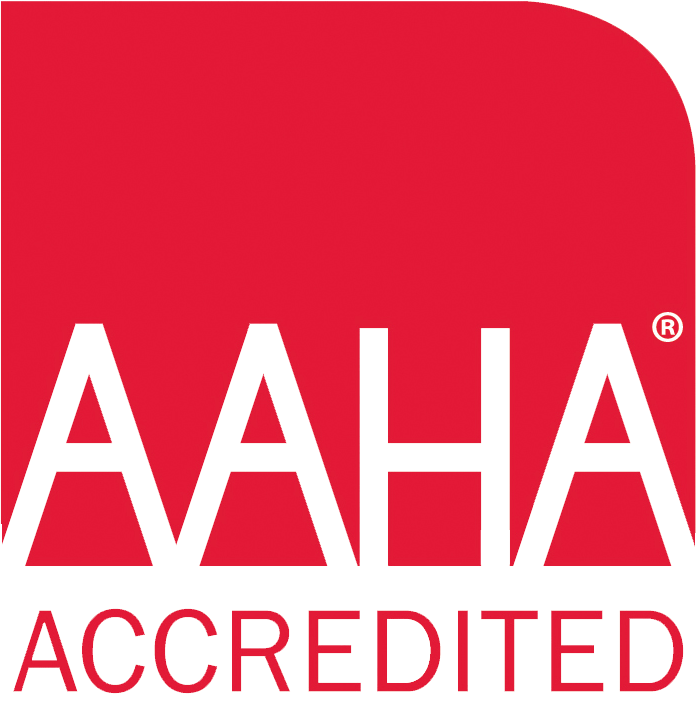Many of today’s pet owners have something in common: wanting their pets to live the best and healthiest lives possible. As veterinary medicine has advanced, veterinarians and owners have gained access to more information and data that sheds light on the best ways to care for individual pets and tailor treatments and preventive care to both their breed and genetic makeup.
If you’re a breeder striving to improve the future of a breed or a pet owner who wants to give their dog the best life possible, understanding your dog’s genetic and orthopedic health is essential, and this information is now more available to the average pet owner, thanks to OFA testing and certification.
Some of the most common conditions that affect dogs, like hip dysplasia, heart disease, and patellar luxation, can be passed down through genetics. But with modern veterinary tools like OFA testing, we now have a way to identify these risks early, take preventive steps, and make more informed decisions about care and breeding.
In this blog, we’ll break down exactly what OFA testing is, how it works, and why it’s so important for both breeders and everyday pet parents to consider. Because the better we understand our dogs’ health, the better care we can give them — and that’s something every dog deserves.
What Is OFA Testing and Certification?
The Orthopedic Foundation for Animals, or OFA, is a group focused on the health and longevity of breeds. To help improve modern breeding practices and help dogs live longer and healthier lives, the OFA offers specific testing protocols that evaluate and certify the genetic health of dogs.
While closely related, there are differences between OFA testing and OFA certification for dogs, and each represents a different step within the overall process the OFA has created for evaluating a dog’s health.
- OFA testing refers to the actual health screenings performed by a veterinarian or specialist. Diagnostic techniques like X-rays and blood tests are commonly used during testing for an array of conditions.
- OFA certification is what happens after testing is conducted and results have been reviewed — if the test results meet the established health standards, the OFA will issue an official certification for the dog. This certification serves as documented proof that the dog has passed that particular health screening, and it can be made publicly available in the OFA database.

Conditions Evaluated Through OFA Testing
Although not a full list, the most common conditions with a hereditary component that can be evaluated through OFA testing include:
- Hip Dysplasia
- Elbow Dysplasia
- Eye Diseases
- Cardiac Diseases
- Respiratory Function (Brachycephalic Obstructive Airway Syndrome)
- Patellar Luxation
- Autoimmune Thyroiditis
All of these conditions can be tested through OFA for breeds commonly afflicted by the syndromes. There are a handful of additional syndromes that can be tested through OFA, as well as specific genetic tests for certain breeds at risk for these syndromes.
OFA testing can also be conducted for cats within the OFA’s hip dysplasia, cardiac, and patellar luxation databases. The protocols are largely the same as those utilized for evaluating these conditions in dogs.
How OFA Testing & Certification Leads to Healthier Dogs and Better Breeding
OFA Testing for Better Breeding Practices
Whenever we’re talking about breeding, the goal should be to produce healthy puppies — not just puppies — making health testing a valuable tool in improving breed health and keeping serious illnesses from being passed down through breeding. Breed-specific health testing is one of the best ways to achieve that goal, and it is widely recommended that anyone who is considering breeding their dogs have the testing done prior to seeking out any other veterinary reproductive services.
Any type of health testing, including OFA testing, should be used as a tool to create complementary pairs to improve the breed. Although a common misconception, health testing should NOT be used to remove a dog from the breeding population unless the issue is severe and/or the breed is common. An experienced reproductive veterinarian will be your best resource in these cases and can provide guidance and genetic counseling pending the results of health testing.
Because there is no such thing as a "perfect" dog, breed-specific health testing helps us identify the strengths and weaknesses of each dog. This information allows us to pair dogs together in a complementary way to lower the risk of diseases in future generations. The goal with any breeding program should be to improve the health of the breed and preserve the breed for longevity.
Testing Insights Can Lead to Happier and Healthier Dogs
While in many cases, the conversation around OFA certification primarily focuses on the advantages of canine health testing for breeding dogs, there are also several cases where pet dogs could benefit in order to best care for that pet moving forward.
Often, pet owners seek breed-specific health testing to know what conditions they may need to manage for their beloved pet. For example, PennHIP, which we will discuss further below, gives a risk assessment for the dog’s overall chances of developing hip arthritis that may impact their health, mobility, and quality of life in the future. By knowing this information when the dog is young, veterinarians and owners can make changes earlier to preserve the health and longevity of the joints.
At Animal Hospital of Statesville, we also commonly have owners of working dogs – like police dogs and service dogs – seek out OFA certification for their companions to ensure the dogs are up for the assigned tasks and a working lifestyle. We can use the results of testing to modify or limit high-risk activities that could exacerbate certain health conditions, allowing these working dogs to perform at their highest level for as long as possible.
How OFA Testing and Certification for Dogs Work
Once you’ve made the decision to have your dog’s health certified through OFA, your dog will be examined by a licensed veterinarian, and appropriate diagnostic tests and techniques will be utilized depending on the type of test being performed — such as x-rays for hips or elbows or blood samples for thyroid testing. Testing procedures for different conditions and certifications often include:
- OFA Hips, Elbows, and PennHIP are radiographic (x-ray) tests often done with sedation to facilitate correct positioning.
- OFA Patellar Luxation and Respiratory Function require a physical exam.
- PennHIP and OFA Respiratory Function must be performed by veterinarians who have undergone additional training and are certified to perform the testing. At Animal Hospital of Statesville, we have DVMs on our team who have undergone specialty training and are certified to perform PennHip and OFA Respiratory Function tests.
- OFA Advanced Cardiac Diseases and OFA Eye Diseases must be performed by boarded specialists – a cardiologist and an ophthalmologist, respectively.
The results from these screenings are submitted to the OFA through a standardized application process that your vet’s office will often handle filing.
After the application and supporting testing materials have been received, OFA evaluates the results and assigns a certification code based on their findings. If your dog meets the criteria for normal health, a certificate will be issued to you, and the results will be added to the public OFA database.
Pet owners interested in this type of testing should be aware that certain tests have different ages for which an OFA certification can occur, due to the periods of time some conditions need to develop. Testing prior to then may not yield reliable results. Any testing done prior to that certification will be considered a “preliminary” result and will not count as a formal certification.
- OFA Patellar Luxation, Respiratory Function, Cardiac, and Thyroid can be certified as early as 12 months of age.
- OFA Hip and Elbow Dysplasia can be certified as early as 24 months of age.
- PennHIP can be performed as early as 4 months of age.
Certain tests recommend re-evaluation on an annual basis for at-risk breeds. These include OFA Respiratory Grading, OFA Eye Disease, OFA Cardiac, and OFA Thyroid. Your veterinarian and the OFA may be able to guide you if your pet’s breed is at high risk for these conditions.

The Benefits of Genetic Testing Go Beyond Your Dog
Transparency and better breeding practices are top priorities for the OFA, and all normal results are made publicly accessible on the OFA website. For abnormal results, OFA encourages owners to share them in the public database as well to contribute to better understanding and tracking of orthopedic and genetic illnesses in dogs — though for some test types, the decision to disclose is left up to the owner and whatever they are most comfortable with.
Dogs that have completed all the recommended health screenings for their breed (as determined by the breed’s parent club and the OFA), with all results publicly available, will earn a Canine Health Information Center (CHIC) number and certificate — a sign of commitment to responsible breeding and lifelong health.
The information collected and shared through OFA benefits everyone:
- Veterinarians can use it to stay informed about breed-specific conditions, advise breeders, and better understand new patients.
- Breeders can demonstrate the health of their breeding stock and research potential mates more responsibly.
- Prospective dog owners can explore breed health risks and find breeders who prioritize health and transparency.
Every test in the OFA database follows evaluation standards developed by veterinary experts in their respective fields, ensuring reliability and consistency. These methods are internationally recognized and trusted across the veterinary and breeding communities.
Why Breed-Specific Health Testing for Dogs Matters
Breed-specific health testing is recommended for all breeds – and for good reason. Every breed of dog is different and can be genetically predisposed to a variety of inherited health conditions. When breed-specific health testing for certain at-risk breeds is leveraged by veterinarians, pet owners can gain valuable insights into their dog’s overall health and better identify and manage any conditions to which their pet is susceptible. When some of these conditions are caught early, veterinarians can intervene with appropriate care and prevent pain, discomfort, and secondary conditions from developing.
For example, giant breed dogs, such as Mastiffs, Great Danes, and Bernese Mountain Dogs, tend to be at higher risk for hip dysplasia. If diagnosed by 16 weeks of age, a simple surgery can improve the hip conformation and help improve that dog’s quality of life for years to come.
Another example can be found in brachycephalic breeds, such as Pugs, French Bulldogs, and English Bulldogs, which are at high risk for Brachycephalic Obstructive Airway Syndrome. This progressive syndrome causes problems with breathing, airflow, and oxygenation of the body often leading to several secondary complications. A veterinarian may recommend an at-risk pet be screened for OFA Respiratory Function in order to determine if surgical correction is needed to improve airflow before secondary complications, like laryngeal collapse and susceptibility to heat stroke, arise. Again, by knowing the health status sooner, we are better able to care for your dog and ensure they are healthy for as long as possible.
Because of genetic predisposition, some breeds have more recommended testing than others due to a higher number and frequency of health abnormalities common within the breed. For example, an English Bulldog has more recommended health tests than a Cairn Terrier (like Toto from The Wizard of Oz) because of the conditions the English Bulldog breed is inherently at risk for due to their genetic makeup and anatomy.
For owners interested in learning more about the health conditions their dog may be predisposed to the OFA’s breed directory, as well as specific breed clubs (e.g., the German Shorthaired Pointer Club of America) are great resources for identifying health conditions recommended to have assessed prior to breeding.
Although specific genetic tests for certain breeds can be useful tools, full genetic panels do not replace breed-specific health testing and are insufficient as a health certification. Because many traits (e.g. hip dysplasia) do not have a simple genetic inheritance pattern, OFA certifications are still necessary to assess the traits each dog carries.
OFA Certification Is Just One Aspect of Responsible Dog Breeding and Ownership
When it comes to breeding dogs responsibly, health certifications like those from the OFA play a vital role in promoting long-term wellness and reducing the risks associated with many inherited conditions. But OFA certification is just one piece of the puzzle. True responsible breeding involves a comprehensive approach to your dog's physical and reproductive health — before, during, and after breeding.
One important – but often overlooked – part of reproductive screening is testing for Brucella canis. This is a highly contagious bacterial infection that can cause infertility, late-term abortions, and other serious complications in both male and female dogs. Even more concerning, Brucella can also pose a risk to human health, as it is a zoonotic disease. The infection is primarily spread through breeding (as it’s sexually transmitted), but it can also be contracted through exposure to contaminated environments or bodily fluids.
Because most dogs infected with Brucella canis show no symptoms, regular testing is essential. A simple blood test can detect the infection, and early diagnosis is the only way to prevent its spread. Unfortunately, there is no effective treatment for dogs who test positive, which makes prevention even more critical.
We recommend the following testing schedule:
- Stud dogs: Every 3–4 months, if breeding regularly, or before any planned breeding if used sporadically.
- Bitches: Prior to every breeding cycle.
If you have questions and you'd like to reach out to us, you can call us directly at 704-802-1280, or you can email us at [email protected]. Don't forget to follow us on social media Facebook, Instagram.


